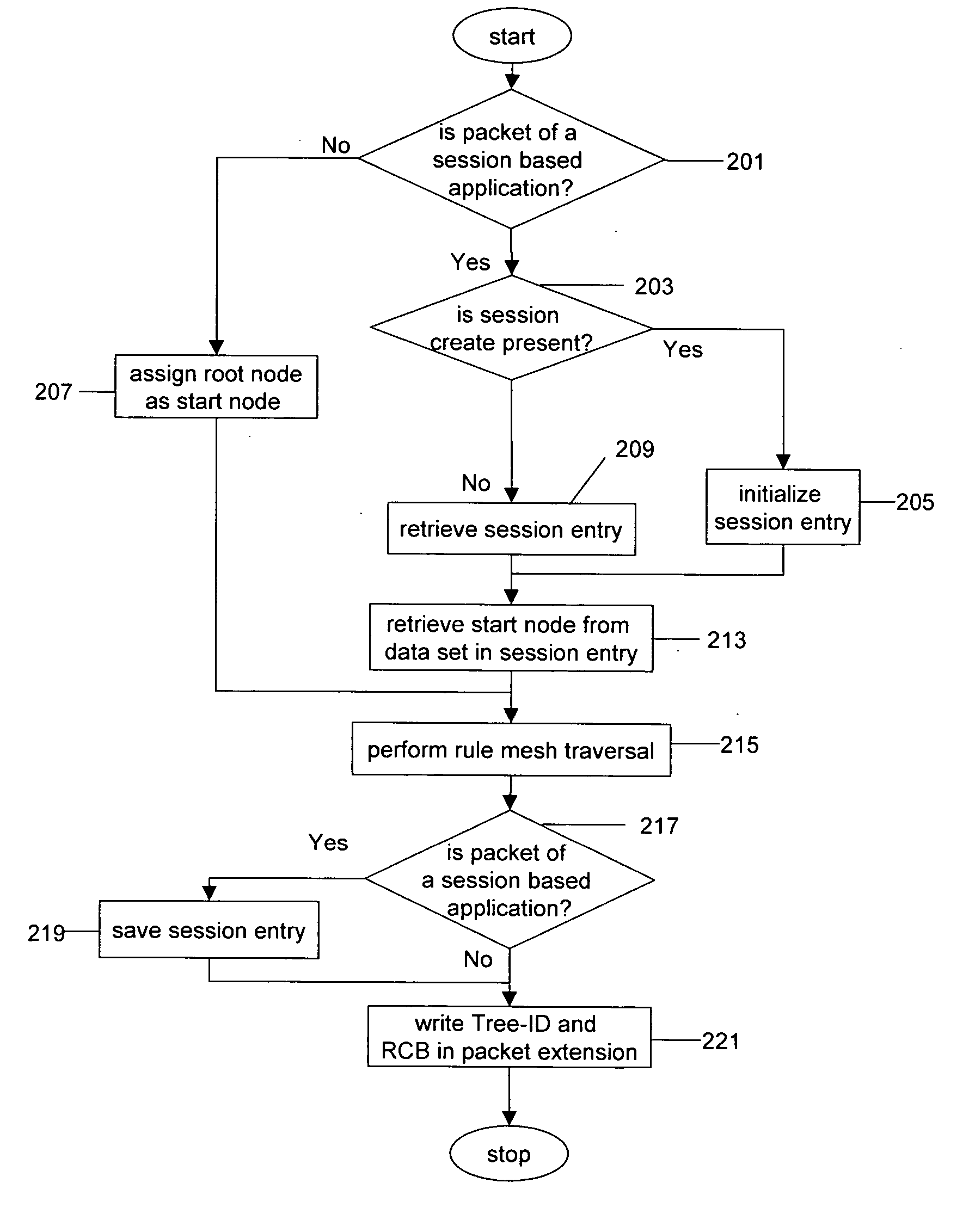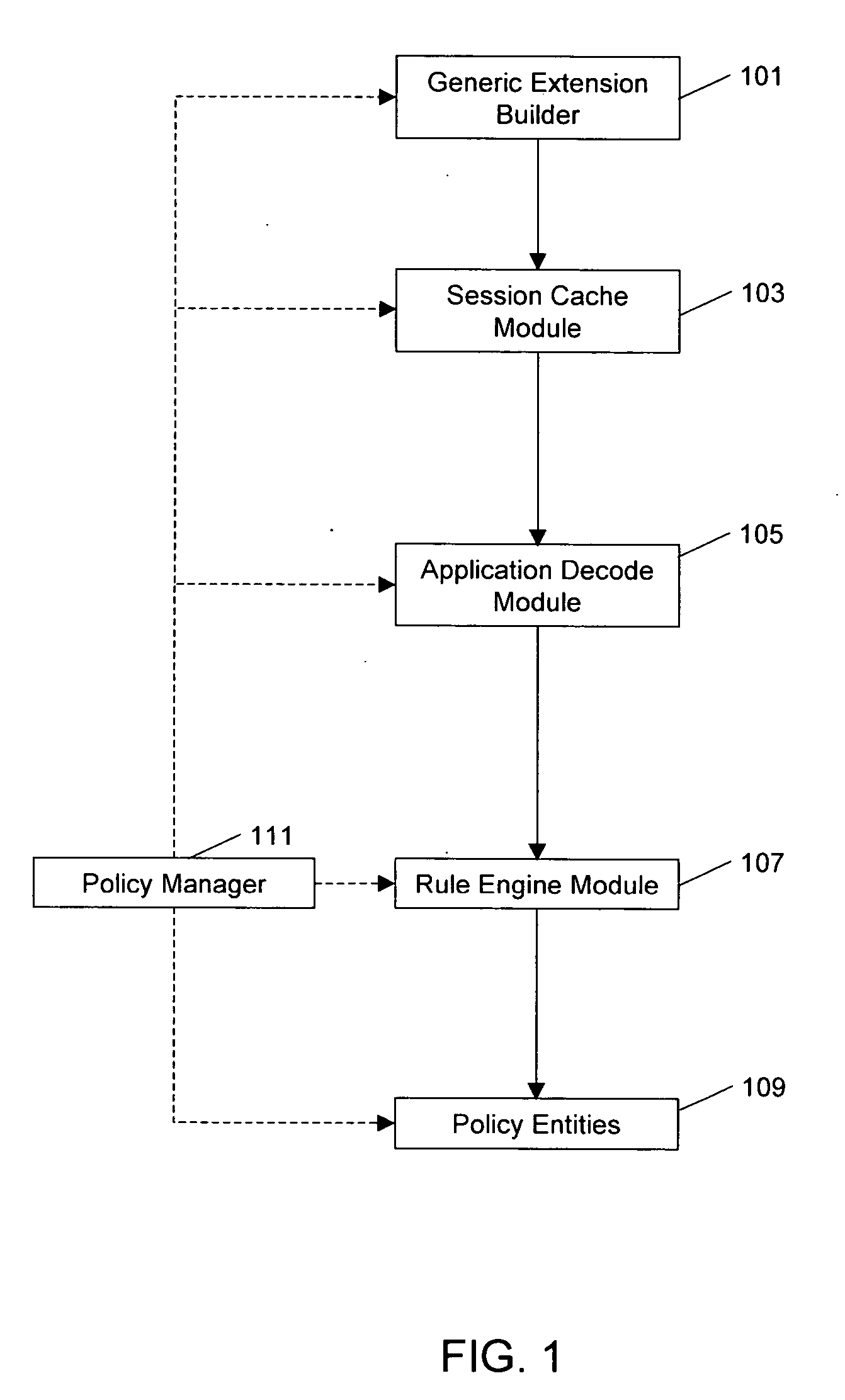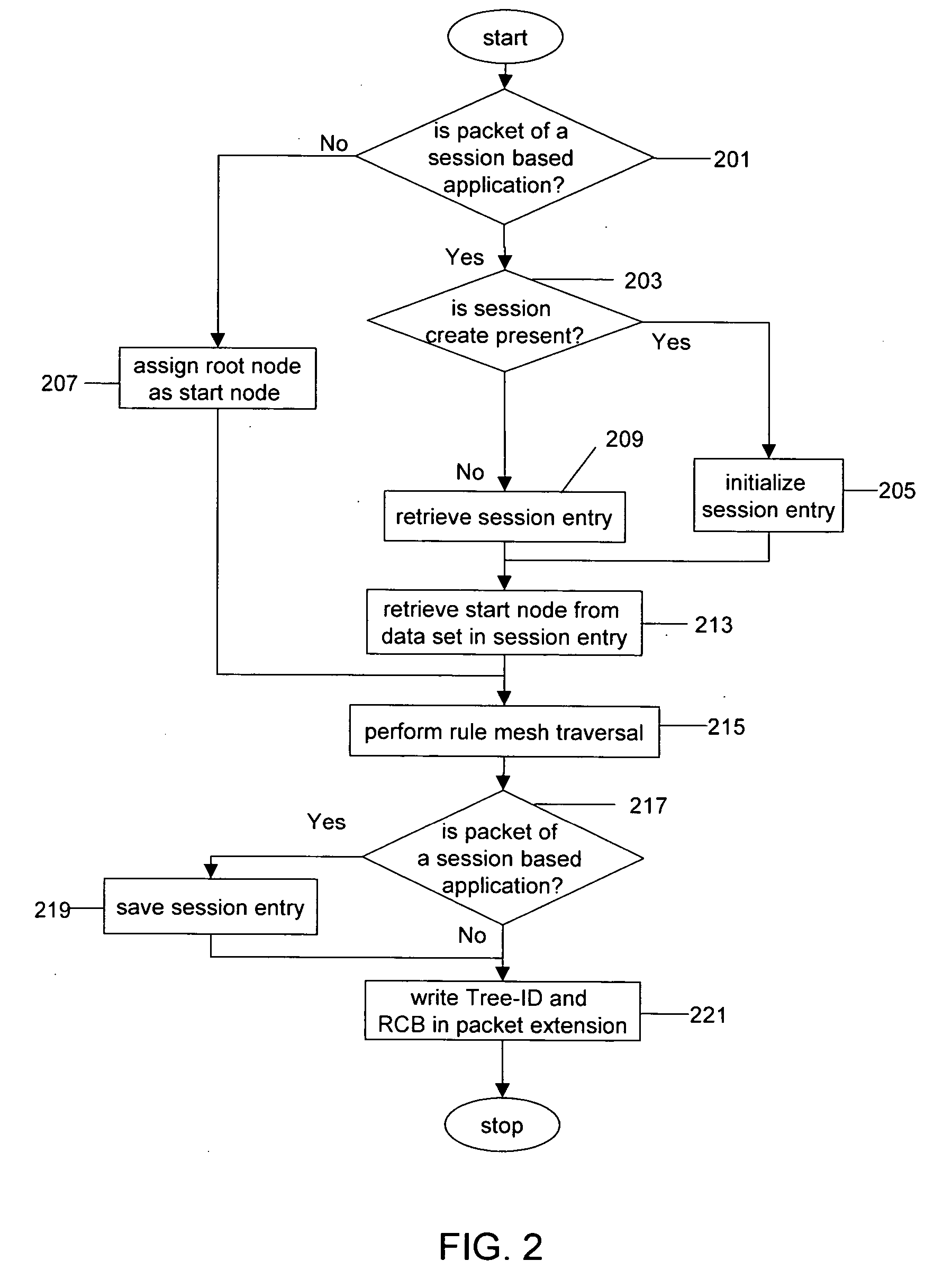Rule engine
a rule engine and rule technology, applied in the field of computer network integrated policy enforcement systems, can solve the problems of affecting the performance of firewalls, affecting and illegitimate users can change data, etc., to achieve the effect of improving the efficiency of rule mesh traversal
- Summary
- Abstract
- Description
- Claims
- Application Information
AI Technical Summary
Benefits of technology
Problems solved by technology
Method used
Image
Examples
Embodiment Construction
Definitions
[0029] Data packets: This term refers to units of data that are sent on any packet switched network or the like, and encompasses Transmission Control Protocol / Internet Protocol (TCP / IP) packets, User Datagram Protocol (UDP) packets, which may also be referred to as datagrams, or any other such units of data.
[0030] Expression: An expression denotes a property of network traffic whose value determines the outcome of a condition. Examples of expressions include source IP address, destination IP address, and layer 3 protocols.
[0031] Rule mesh: A data structure, which is a combination of two types of data structures namely, tree and graph. The data structure starts as a tree, the leaf nodes of tree end into a graph.
[0032] Tree data structure: A tree data structure is a data structure comprising nodes and edges. A node can be root node, leaf node or an internal node. The root node is the starting node of a tree. There is only one root node in a tree. On traversing the tree...
PUM
 Login to View More
Login to View More Abstract
Description
Claims
Application Information
 Login to View More
Login to View More - R&D
- Intellectual Property
- Life Sciences
- Materials
- Tech Scout
- Unparalleled Data Quality
- Higher Quality Content
- 60% Fewer Hallucinations
Browse by: Latest US Patents, China's latest patents, Technical Efficacy Thesaurus, Application Domain, Technology Topic, Popular Technical Reports.
© 2025 PatSnap. All rights reserved.Legal|Privacy policy|Modern Slavery Act Transparency Statement|Sitemap|About US| Contact US: help@patsnap.com



